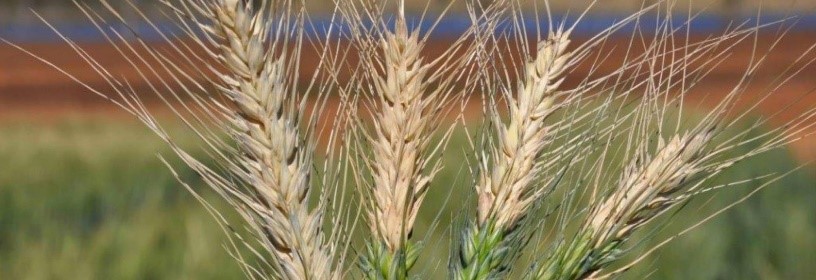Description

Disclaimer: Copyright infringement not intended.
Context
- Under climate change conditions, wheat blast is predicted to spread primarily in tropical regions.
Wheat Blast
- Wheat Blast is a fungal disease caused by the pathogen Magnaporthe oryzae Triticum (MoT).
Occurrence:
- Origin: First identified in Brazil in the 1980s, primarily affecting rice crops.
- Shift to Wheat: In 2016, a devastating outbreak occurred in wheat fields in Bangladesh, marking the first instance of Wheat Blast affecting wheat crops.
Disease Characteristics:
- Host Range: Primarily targets wheat (Triticum aestivum) but has the potential to infect barley and other grasses.
- Mode of Transmission: Spores spread through wind, rain, and contaminated farm equipment.
Symptoms:
- Lesions: Initial symptoms include small, oval-shaped lesions on leaves, which quickly expand.
- Spike Infection: Spike infection leads to the development of dark brown/black spots, affecting grain formation.
- Rapid Spreading: The disease can spread rapidly under conducive environmental conditions.
Favorable Conditions:
- Warm and Humid: Thrives in warm and humid climates, making South Asian regions vulnerable.
- Fast Reproduction: The pathogen reproduces rapidly, contributing to the swift spread of the disease.

Impact on Agriculture:
- Yield Loss: Severe yield losses, with affected fields experiencing up to 100% reduction in wheat production.
- Economic Consequences: Poses a significant threat to food security and has economic implications for affected regions.
Management Strategies:
- Resistant Varieties: Developing and promoting wheat varieties resistant to Wheat Blast.
- Crop Rotation: Implementing crop rotation practices to break the disease cycle.
- Fungicides: Application of fungicides as a preventive measure.
- Quarantine Measures: Restricting the movement of contaminated plant material and farm equipment.
Global Concern:
- Spread Potential: The global scientific community is concerned about the potential spread of Wheat Blast to other wheat-growing regions.
- Research Emphasis: Ongoing research to understand the pathogen's behavior and develop effective control measures.
International Collaboration:
- Research Partnerships: Collaboration among international research institutions, agricultural organizations, and governments to address Wheat Blast.
Future Preparedness:
- Early Detection: Emphasizing early detection and monitoring systems to curb the spread of the disease.
- Genetic Research: Continued genetic research to identify and deploy resistant genes in wheat varieties.
Role of Organizations:
- FAO (Food and Agriculture Organization): Providing support for monitoring, research, and implementing control strategies.
- Research Institutions: Conducting studies to enhance understanding and develop sustainable solutions.
Conclusion:
- Challenges and Solutions: Wheat Blast presents a complex challenge, and addressing it requires a multi-faceted approach involving research, technology, and international collaboration.
Wheat Blast remains a critical concern in the agricultural landscape, demanding concerted efforts to safeguard global wheat production and food security.
|
PRACTICE QUESTION
Q. The fungal pathogen responsible for causing the agricultural disease known as "Wheat Blast" primarily belongs to which genus?
A) Fusarium
B) Magnaporthe
C) Phytophthora
D) Alternaria
Correct Answer: B) Magnaporthe
|












